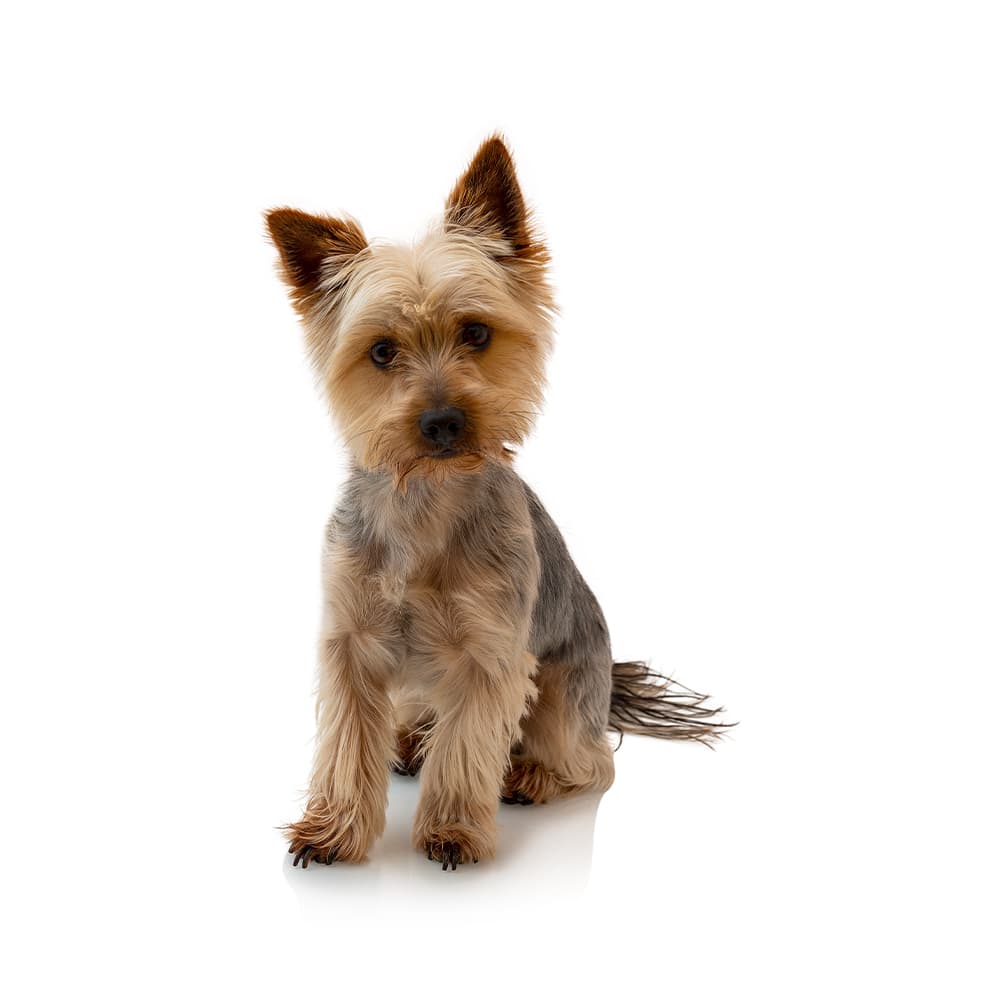Discover your dog's connection to this breed and 200+ others


Discover your dog's connection to this breed and 200+ others



The Australian Terrier is a small, robust breed developed in Australia, with roots dating back to the 19th century. The breed was created by settlers during the 1800s, who needed a dog capable of surviving in Australia's harsh climate, and effective at dealing with vermin and snakes on their properties. Its ancestors are thought to include a mix of several British breeds, such as the Rough Coated Terrier, the Cairn Terrier, the Dandie Dinmont Terrier, and the Yorkshire Terrier.
Australian Terriers can suffer from many health issues, including atopic dermatitis, cleft lip/palate, cruciate ligament disease, cryptorchidism, deafness, degenerative myelopathy, diabetes mellitus, hip and elbow dysplasia, epilepsy, glucocerebrosidosis, hyperadrenocorticism, hypothyroidism, juvenile cellulitis, Legg–Calve–Perthes disease, mast cell tumor, megaesophagus, pancreatitis, patellar luxation, patent ductus arteriosus, portosystemic shunts, and von Willebrand Disease (Type I). Eye conditions for which they may be prone include cataracts, progressive retinal atrophy, retinal dysplasia, distichiasis, keratoconjunctivitis sicca, persistent pupillary membranes. Genetic screening is recommended to assist veterinarians with diagnosis and proactive care, as well as help breeders identify affected and carrier dogs.
Australian Terriers are known for their courage, intelligence, and lively nature. Despite their small size, they have a big-dog attitude and aren't afraid to take on challenges much larger than themselves. This tenacity, coupled with their inherent curiosity, can sometimes lead to them getting into mischief if not properly supervised.
They are also known to be affectionate and friendly with their families, and they are good with children, making them excellent family pets. However, their strong prey drive means they might not be the best fit for homes with other small pets unless socialized properly from a young age.
These dogs are quite active and need regular exercise to keep them healthy and happy. They're also intelligent and respond well to training, although they can be a bit stubborn at times. As with any breed, early socialization and puppy training classes are recommended.
A canine genetic lineage is a group of individuals or entire breeds that descended from common ancestors predating modern breed formation. Often these lineages are associated with a ‘type’ of dog with a unique historical working role and associated behaviors (e.g., herding, scent hunting, etc.).
Terriers were bred to hunt pests like rats, foxes, and badgers. Terriers are tenacious and fearless with high energy levels, strong prey drive, and feisty temperaments which all help in their hunting abilities. Terriers were used as mighty hunters in both urban and rural settings. Terriers have natural hunting instincts and protective tendencies.
Example breeds with ancestry from this lineage include Jack Russell Terrier, Scottish Terrier, and Yorkshire Terrier.
The AKC states that the Australian Terrier is the smallest of the working terriers, and that they have an affinity for children, the elderly, and those with various physical, emotional, and mental challenges.
The breed was officially recognized by the Australian National Kennel Council in 1868, making it one of the first breeds to be recognized and shown in Australia.
https://www.akc.org/dog-breeds/australian-terrier/
https://www.petmd.com/dog/breeds/c_dg_australian_terrier
DOI: 10.1002/9781119540687
https://journals.plos.org/plosone/article?id=10.1371/journal.pone.0239542
Recommended by top vets with decades of experience
21 breeds
64 genetic health markers
50 genetic trait markers
